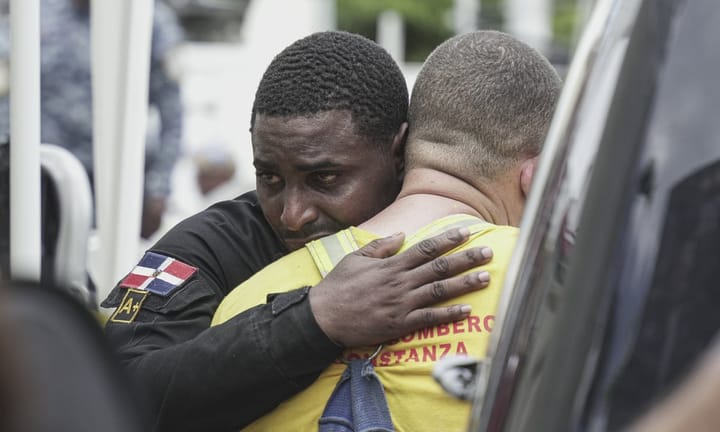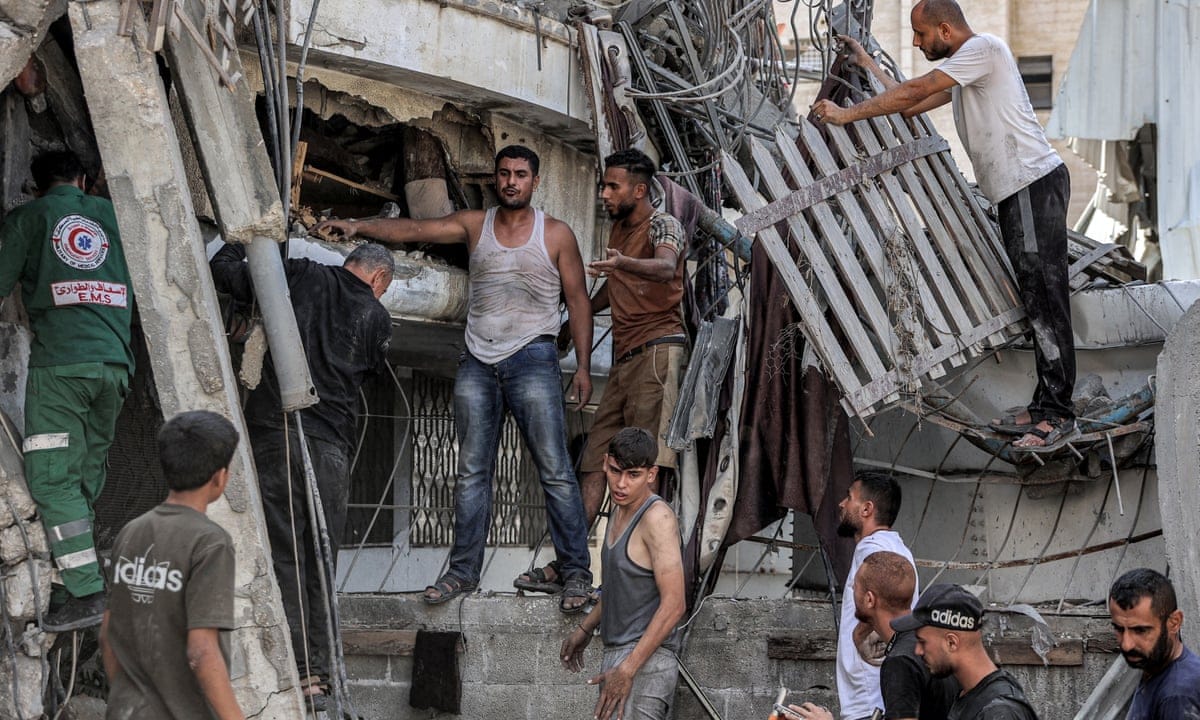Hundreds of thousands are still trapped in Jabalia within northern Gaza due to an intense campaign by Israel against Hamas fighters, who have reemerged recently after some time away from this area.
The Israeli military asserts it has taken down over 50 adversaries through air strikes and direct confrontations while troops strive for total elimination of Hamas forces in the region.
Israel issued evacuation orders to citizens, insisting they relocate to southern parts supposedly safe from harm; however, many have either chosen not to leave or are unable due to various reasons—fuelled by fears that this might be a permanent displacement strategy as part of an overarching plan for territory control.
Israel refutes allegations about these evacuation orders being systematic clearance plans and maintains they were issued strictly aimed at separating civili0ns from the fighters, counter to Hamas' claims that it exploits its people as human shields—a claim which remains unaddressed.
Accordingly, health facilities have been presented with around 350 casualties since Jabalia encountered aggression on October 6th; Dr Munir al-Boursh of Gaza's Health Department reports that above half are female or young—with many still found in the streets and ruins. The rescue teams find it challenging to access these bodies due, again, primarily because of strikes by Israeli forces. Entire families have vanished with little hope for recovery.
Palestinian health authorities urgently call upon global humanitarian groups like Red Cross or WHO and world governments in general; they're pressing to establish a channel towards the Kamal Adwan, Al-Awda, and other local medical institutions where doctors are resolute not to abandon their patients. "We have over 300 healthcare staff here at our facility alone," shares Hussam Abu Safiya from Kamal Adwan hospital; he further emphasizes that even a single meal is beyond reach for them, let alone providing sufficient care safely and effectively: “The world must rush to assist us in these trying times.”
In the past week, grim footage circulated on social media platforms showing what seemed as Palestinians caught amidst flames from missiles that Israel claimed were fired at Al-Aqsa hospital located within Deir Al-Balah city—an attack which led to least four deaths and numerous injuries. Despite these occurrences, the U.S., through a White House national security spokesperson's statement recently made publicly accessible online, underscored Israel’s obligation in ensuring civilian protection during its operations against Hamas—a perspective which is still under intense debate and scrutiny from various angles at present time.
The conflict has taken a heavy toll on Gaza with the death count nearing 42,500 individuals according to figures released by their Health Ministry; in addition to this massive loss of life were physical devastations leading about 9 out of every ten residents forced into crowded tent camps or makeshift shelters.
Israel’s military activities are not limited only within Gaza, extending its operations also towards southern Lebanon and Beirut as well—where after six days following an assurance given by the U.S., Najib Mikati was urged to address a lethal strike on municipal structures which left five dead with efforts still being made for debris clearance: The same Hezbollah group present in southern neighborhoods of Beirut and also located within Southern Lebanon, according to Israeli officials.
Israeli forces launched strikes at significant historical markets causing considerable damage—this comes following a previous attack on the mayor's office resulting tragically into loss for Mikati: The exact count remains uncertain though it is known four individuals died in this particular assault too; while these developments continue to unfold, various parties involved remain hopeful that dialogue and negotiation may lead toward peace.
Read next

Dominican Republic halts rescue efforts following devastating ceiling failure at nightclub incident
Rescue teams in the Dominican Republic on Wednesday concluded their search for survivors following a catastrophic nightclub roof collapse—this marks one of its most tragic disasters over recent years, with confirmed death toll rising beyond 180 individuals within this Caribbean nation.
Authorities announced an additional count of 60 fatalities

Angelica Huston Discloses Past Cancer Diagnosis; Now Fully Recuperated and Clear of Disease
Anjelica Huston disclosed her cancer diagnosis six years ago after the release of her 2019 film John Wick: Chapter 3 – Parabellum. The actress prefers not to divulge specific details about the type of cancer she faced but expressed pride in overcoming this serious health challenge, which required significant changes to

Royal Visit: King Charles and Queen Camilla Surprise Papal Counterpart at Recovery
The British monarch Charles and his consort Camilla paid an unexpected visit to Pope Francis during their four-day official trip across Italy.
They met with the pontiff at his residence within Casa Santa Marta inside Vatican City where he recovers from a severe lung infection caused by pneumonia, which had

